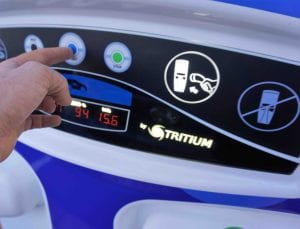Australia has an opportunity to seize the competitive advantage in a future, decarbonised global energy system, but experts warn that governments must do more to simplify the process for households and businesses to go electric.
A research brief prepared by Australian energy experts and published by the Australian Academy of Technological Sciences & Engineering (ATSE) has called for an acceleration of the deployment of renewable energy, arguing the technologies needed to decarbonise Australia’s energy system are already available.
“Australia has the technologies to avoid a future crisis, but we must act now to lay the foundation of a truly modern energy system,” the former head of engineering and system design at the Australian Energy Market Operator, Alex Wonhas, said at the launch of the report.
While the research report suggests that Australia will need a diversity of new energy technologies to play a role in a future decarbonised energy system, experts say there should be a greater focus on the electrification of energy use to reduce Australia’s dependence on fossil fuels.
Professor Renate Egan, the CEO of UNSW Energy Institute, says there are minimal technical barriers to the electrification of energy use. However, Australian consumers need greater policy support and more information to confidently choose electric replacements.
“I don’t think we have barriers so much as we lack information and incentives,” Egan said.
“If we can have a coordinated effort around it, it should be possible to have all new homes electrified rather than having gas delivered. It would be better not to be making investments in gas infrastructure now in homes.
“There are a million pieces of small infrastructure that need to be replaced over the next ten years, and we should start right now … every decision you make from now needs to be to electrify.”
Electrification of energy use, which involves the replacement of appliances like gas stoves, hot water systems and petrol-fuelled cars replaced with electric alternatives – has been touted as a means of cutting both emissions and energy costs because they can be powered with renewable electricity.
Former Chair of Natural Hazards Research Australia, Katherine Woodthorpe, echoed the view that the natural need to replace appliances provides an opportunity to phase energy consumption away from fossil fuels through electrification.
“Every time you buy a new appliance, buy the electric version. Ditto cars and other parts of your infrastructure at home and at work,”
“Every time you make that decision, you buy electric… it’s about making those decisions on a daily basis.”
Head of the Battery Storage and Grid Integration Program at the Australian National University, professor Lachlan Blackhall, told the briefing policymakers should support households and businesses to make the switch to electric appliances by working to simplify the process.
“It’s important to acknowledge that householders and communities are being asked to do a very significant amount of heavy lifting to support the energy transition,” Blackhall said.
“But it can be quite complicated for them.”
“The reason we’re seeing solar being deployed at such scale is it’s now a relatively simple proposition. You walk into your friendly local solar installer, and you can buy a solar system, and we understand how to install it at scale.
“So we really need that same experience when it comes to new technologies in people’s homes,” Blackhall added.
Former managing director of Ausgrid, George Maltabarow, told the briefing that the electrification of Australia’s energy use would require system planners to manage the changing dynamics in the electricity system – but that the technology needed to do so already exists.
“The transition away from fossil fuels will require electrifying everything. The good news is we have all the technologies available. We now need the frameworks to manage the investment,” Maltabarow said.
“We need options for consumers to reduce demand and be rewarded for doing so. We need incentives to shift demand to periods of lower demand, smart meters and internet controls.”
“Now, does that mean consumers have to stand by monitors to figure out ‘what am I going to do to reduce and manage my demand?’ – The answer is no because set-and-forget software is available now. It can be tailored to the circumstances of individual households, and consumers can relax about having that available.”
Maltabarow added that while nuclear could play a role in decarbonising energy systems in a global context, it was unlikely that current technologies would be able to compete on cost.
“Certainly overseas, [nuclear] is going to be much more of a part of the solution. My own view is that in Australia, because we’re blessed with the world’s best wind and solar resources, I just don’t see that nuclear will ever compete,” Maltabarow said.
“I’m not saying that nuclear is not an appropriate decarbonisation technology. I simply can’t see it being competitive in the Australian context.”
The CSIRO released the latest iteration of its GenCost assessment, comparing the effective cost of new electricity projects in Australia, which again confirmed that firmed wind and solar can still outcompete new-build coal, gas and nuclear.
“If you look at that report, it consistently highlights that in the Australian context, nuclear will be significantly more expensive than the kind of roadmap laid out in the ISP, which largely is that our future will be powered by renewables supported by energy storage,” Blackhall added.









